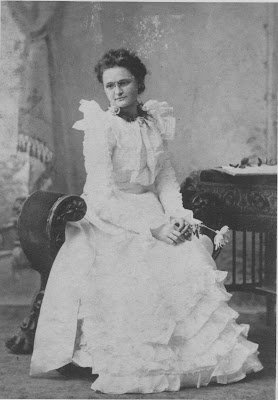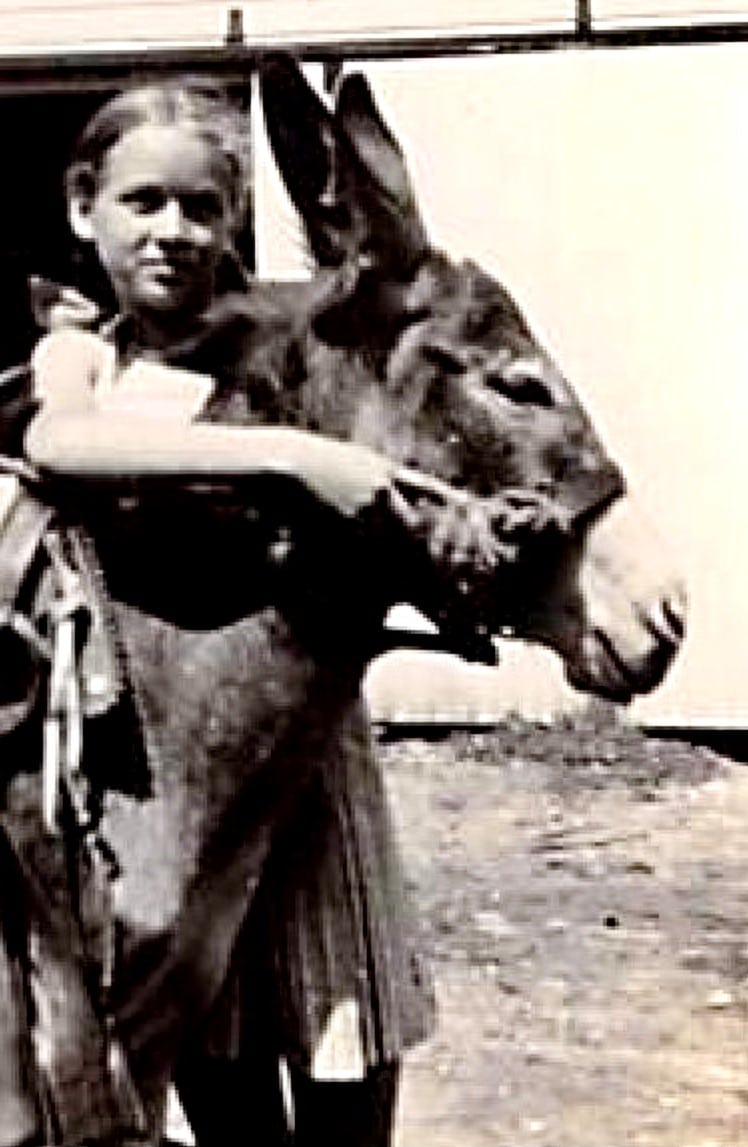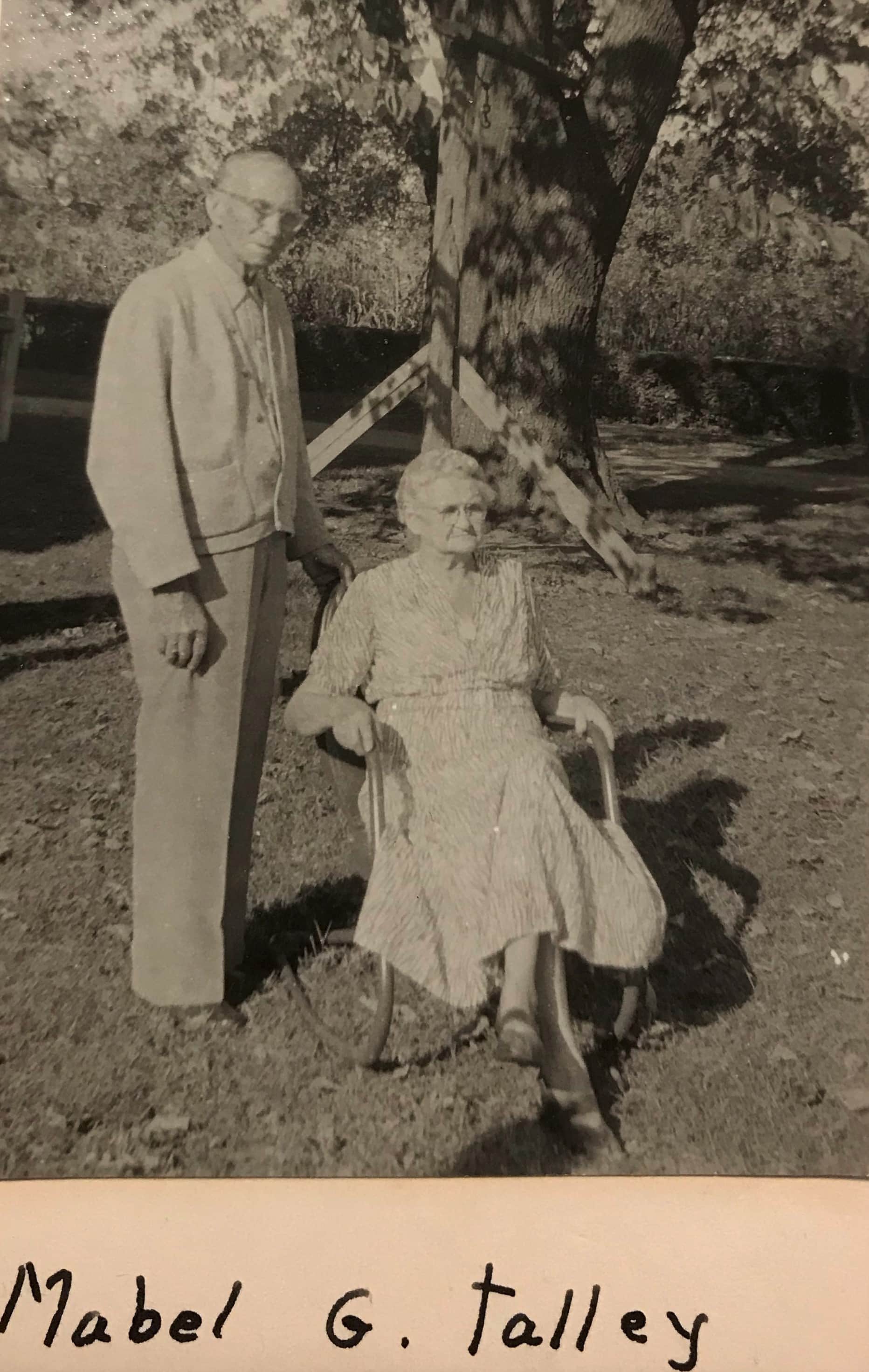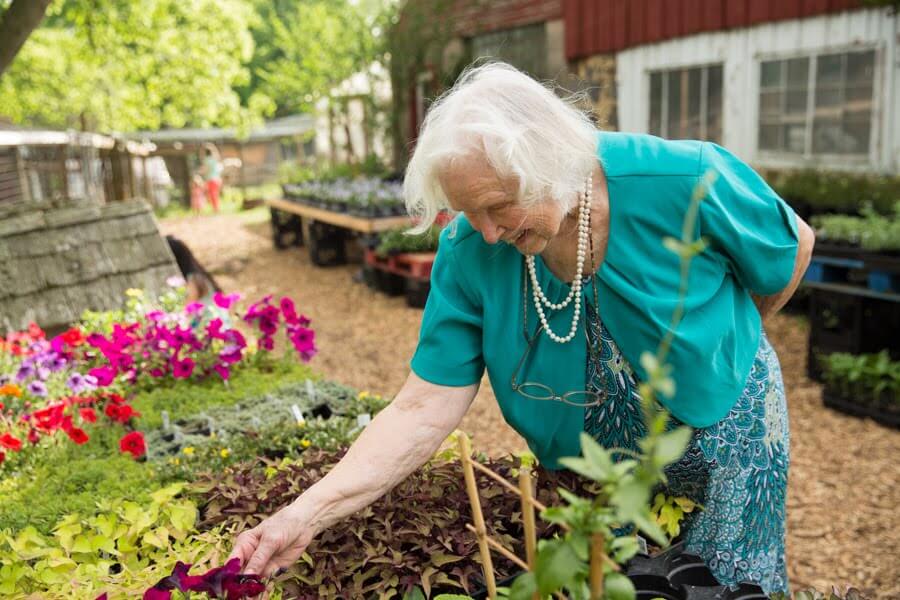This post may contain affiliate links. Probably doesn’t, but it might. It doesn’t cost you anything extra but if you use these links to buy something, we may earn a commission.
Although women make up 51% of the world’s population, and 43% of all farm workers, and grow more than half of the world’s food, little is heard of our women farmers. The land passed to the son of the family and the women have been invisible.
Today, I am talking about a woman who bridged the 19th and 20th centuries. She was a smart businesswoman, an expert farmer, a devoted wife and mother, and someone who triumphed over adversity and celebrated life.
Meet Mable Garfield Talley Rotthouse.

I am fortunate to have a heritage that honors the women in our family, and I am fortunate to have so many smart, talented, loving, and capable women who have set such a high standard for me. Mable is my maternal great-grandmother.
Mable Garfield Talley was born June 1, 1880, to William Talley (1845-1923) and Rachel Emma Baker (1850-1935). Her two older siblings both died in the first year of life, and her sister Anna, died at age 27. Her sister had “hip disease,” which may have been developmental dysplasia.
In 1880, the country’s population was 50 million, of which almost 23 million were on farms. By 1955, when Mable died, the total population was 151 million, of which the farm population was about 25 million. Plows, cultivators, tractors, indoor plumbing, electricity, phones, cars, two world wars, Great Depression, frozen foods, supermarkets, television, antibiotics, vaccinations, knowledge of how to treat patients during and after surgery—the dramatic changes in Mable’s lifetime are astonishing.
William and Emma Talley had a farm off Naaman’s Road, close to Target’s current location. The Rotthouse family settled on a farm close to the Wilmington Turnpike (Concord Pike) in the area now known as Blue Rock Manor. Most likely Mable and Harry met at the Grange, which was the social hub for area farmers.

Mable married Harry R. Rotthouse on September 9, 1903. Harry was a first generation American, son of Louisa Shulmeister and Frederik Wilhelm Rotthouse, both of Germany. They were part of the wave of immigrants in the 19th century, leaving multiple wars behind. Mable and Harry started a drug store in Wilmington, but soon realized they did not care for city life. They came back to the Rotthouse family farm, Cherrywood. Harry’s parents sold most of the acreage of Cherrywood Farm to the young couple in 1907.
As you might expect from the name, Cherrywood Farm had cherry trees, both sweet black cherries and tart cherries. The cherries were sold in the farmers market on King Street. There were also a few pear trees and apple trees. By the 1920s the cherry trees had died out, but the Rotthouses had a thriving vegetable farm by then.
Mable was an accomplished dressmaker, and made dresses for others on order. Of course, she made clothes for her family as well. Her daughter, Rachel, remembered a pink dress that was the envy of her schoolmates! Mable taught her daughter these skills also—as Rachel said, “She put a needle in my hand as soon as I could hold one (around age 4),” and Rachel later made the clothes for her own five daughters.
Mable wove her own fabric on two different looms—a small loom that sat on the table, and a larger floor loom. Both were made by her husband, Harry. She continued to weave throughout her life. Her granddaughter, Penny, remembers the placemats that she made. Another granddaughter, Elaine, remembers the fabric that Mable wove and then made into a suit for Elaine’s son, Mable’s first great-grandchild. That suit was worn by all the boys in the family.

Mable and Harry had two children. Their son, William, named for Harry’s father, died unexpectedly from a blood clot after having his appendix out at age 25. Their daughter Rachel, named after Mable’s mother, went on to marry John Webster, and helped him manage Highland Orchards, their five daughters, and his mother.
Mable and Harry had a “truck” farm, growing small vegetables—asparagus, lettuce, chard, celery, beets, broccoli, cauliflower, tomatoes, parsley and other herbs, scallions, beans, and rhubarb, among others. They had chickens, pigs, and a few milk cows. They were able to feed their family and have extra to take to market. Asparagus, rhubarb, and shelled lima beans were three of their biggest cash crops. They usually went to Market on Wednesdays and Saturdays, so the day before was preparation day. After spending the day cutting asparagus, they would spend the evening tying it into one-pound bundles, so it was ready to go in the morning. The same preparation went into rhubarb and all the vegetables. Everything was cleaned and ready to present to the customers. Later in the summer, Mable would shell 3-4 bushels of lima beans to take to market each time. Her children, of course, had the privilege of helping shell also. I always admired my grandmother Rachel’s nimble fingers at shelling—she was faster than anyone else—now I know she learned it from her mother, Mable.
Mable made chow chow, a version of pickled salad vegetables. Still popular in Amish communities, Mable made chow chow with a mustard sauce. She used a variety of vegetables cut into chunks, so every batch was different.
Recipe: Cauliflower, green and yellow beans, lima beans, corn, onions, green tomatoes, vinegar, sugar, salt, mustard. Mable made her own mustard for the sauce. Good luck!
She made barrels of this chow chow to sell at the King Street Farmers Market. The chow chow was packed into cardboard containers (think Chinese take-out!). The containers were originally designed for fresh oysters, but people quickly discovered they could be used for anything.
Mable also made cottage cheese from the extra milk from the family cow, and that, too, was packed into the coated cardboard boxes. This was another popular item at the Market. She made cream cheese as well, and had a handout of recipes for customers. Mable also made butter in pound and half pound blocks. Churning the butter took hours and a lot of arm power. Originally, Mable made the butter in decorative molds with a sheaf of wheat, but then she found her customers preferred the rectangular bricks. The butter, cottage cheese, and cream cheese were sold all year. Mable and Harry brought in hundreds of pounds of ice to keep the butter fresh in the root cellar all summer.
In addition to selling the various vegetables which they grew, Mable made up soup seasoning packets, which they call “potherbs.” Usually potherbs were just the greens, but Mable added something special: her potherbs consisted of celery, a carrot, onion or scallion, with parsley and thyme, tied together (4). All for 3 cents per bundle. What a great marketing device! She made Cherrywood Farms’ vegetable offerings different from everyone else.
Mable also cut corn off the cob, salted it for keeping in stone crocks. In the winter, she soaked it in big buckets of water to freshen it for sale, sold by the cup or the pint.
Mable tried to give her children the best that she could. She made sure they went to school, which was easy. The Sharpley School was at one corner of their property. It was a one room school for many years. When 80 children of all grades were squeezed in, they doubled the size of the school about 1912 to two rooms—40 students in each room. Sharpley School stood about where Aldersgate Methodist Church currently is located.

The Rotthouse family attended St. Stephen’s Lutheran Church in Wilmington. In addition to church activities, the family went on picnics, visited Grandmother Talley, learned to play the piano, visited Uncle Will in Rehobeth, participated in 4-H projects at school. Mable’s daughter had sewing and hat making projects that won prizes. They visited cousins in Phoenixville. The age of the automobile made it possible for this farm family to explore more of the area.
For the first ten years of having children, Mable had a young girl live with them as a housekeeper. Clara watched the little ones while Mable helped plant, tend, and harvest the crops. After 10 years, Clara married and moved out. By then, both children were old enough to help at the market and around the farm.
Mable was profoundly deaf, probably from scarlet fever around age 10. She was fortunate that, with the help of a hearing aid, she could still hear most of what was said. She wore a battery on her chest, which powered the hearing aid. If it was off, she could hear very little. She did not drive the car because of this, but was quite capable in the market, and was always ready to help others. Her horse and wagon took her many places! Her granddaughters cannot remember a time when she did not wear her battery powered aid, worn with a shoulder harness and positioned over the heart.

About 1936, Harry became very ill. The doctors told Mable that he would not live for another year. Mable refused to take this as a final answer and began to search books and folk lore for anything that might help. She went all natural and organic! She started juicing beets, cooking radishes, pushing all kinds of vegetables into her husband. After 2 years, when it was clear that not only was Harry still alive but he was healthier than ever, Mable announced that it was time to do what they wanted. They sold the farm and bought a small trailer.
The Rotthouses proceeded to travel over the next five years to all 50 states and beyond. They camped out most of the time. At one point, they sent a burro home to their daughter, Rachel, and her children. My mother remembers that burro as the most stubborn animal ever! Another time they brought home a baby goat. Nanny was quite adventuresome and loved to climb up on cars. The customers did not care for the hoof prints, so Nanny went to live on another farm. Mable brought a hot pad made of seed pods from Hawaii, which still graces my mother’s Thanksgiving table.
Mable is remembered by her grandchildren as never raising her voice and never losing her temper. She was quiet, modest, and much loved. She was a wonderful cook, an industrious farmer, and a clever businesswoman. Her daughter, Rachel, also knew how to make cottage cheese and chow chow. Her daughter and granddaughters became accomplished seamstresses as well. Her blueberry bread recipe is enjoyed by thousands who have tasted it from the Highland Orchards bakery. When someone is curious enough to try the unusual chow chow, Mable’s heritage lives on.
When Mable is remembered in the family, no one ever talks about her hearing loss—it did not matter. Certainly, she never complained about her hearing loss, or even brought it up. Mable was fully capable and she ran that farm and family as was needed and managed their market business very well.


Eventually Mabel and Harry stopped traveling the country and retired to St. Petersburg, Florida. She died in 1955, and Harry passed away in 1970, over 30 years past deadline. Mabel reminds me that ordinary events and actions have long lasting effects. Knowing her story helps push me to keep celebrating the joys of life, no matter how small or habitual. And—there comes a time to let loose and explore!
~ Ruth
Quick genealogy: Mable Garfield Talley, mother of Rachel Louise Rotthouse, mother of Elaine Webster, mother of Ruth Linton.
Quirky facts for those who enjoy trivia:
- The “Grange,” hub of farm social activities, comes from an archaic word meaning granary, or barn, or farm with outbuildings. The local Grange building is still in existence (101 Brandywine Boulevard), although no longer an official part of the state Grange activities.
- “Truck” farms are so named from the French word “troquer,” meaning to trade or barter. Called truck farms long before there were trucks! First used in 1784 to describe the vegetables and in 1866 to describe the type of farms.
- Bloomer Brothers, who made the oyster boxes (which became chow chow, cream cheese, and cottage cheese boxes), eventually became Fold-Pak, which still makes the boxes, but 90% are now used for Chinese take-out.
- Potherbs is a medieval English term for greens that are cooked. It is an expression still used in southern US states. Mable used the term specifically for ingredients to make soup.
Sources:
https://www.cooksinfo.com/potherbs
http://www.femalefarmerproject.org/
https://www.thoughtco.com/history-of-american-agriculture-farm-machinery-4074385
Interviews with Elaine Webster Linton, Elizabeth Webster Hodge, and Penny Webster Brown. February 2020.
Oral history interview with John Webster, 1984.
Written letter of Rachel Webster to Ruth Linton, 1986
Oral interview with Rachel Webster, 1984
Memoir of Rachel Webster, about 1975






Pingback: The story of Louisa: May we all have a sense of humor and find fun and happiness in life. – Highland Orchards Farm Market
Pingback: Flowers and these Farmers – Highland Orchards Farm Market
Pingback: Rachel Emma Baker Talley – Highland Orchards Farm Market